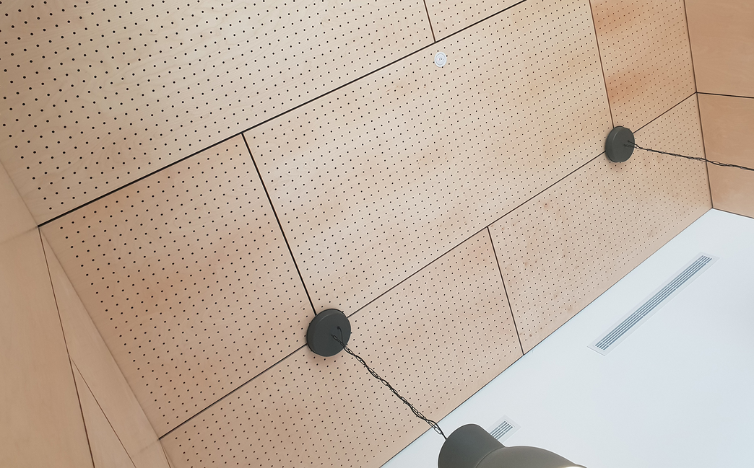The Noise Reduction Coefficient (NRC) measures how well a material absorbs sound. NRC ratings Ranges from 0 to 1, a higher means better sound absorption. For example, an NRC of 0.75 means the material absorbs 75% of sound and reflects 25%.
How NRC Is Measured
NRC is tested in a lab using frequencies from 250Hz to 2000Hz—the range of human speech. The average absorption across these frequencies determines the rating.

NRC Rating Scale:
- 0.00 – 0.30 → Poor absorption (e.g., concrete, glass)
- 0.40 – 0.60 → Moderate absorption (e.g., thin carpets, wood panels)
- 0.70 – 0.95 → High absorption (e.g., acoustic foam, fiberglass panels)
- 1.00+ → Exceptional absorption (specialized acoustic materials)
Why NRC Matters in Acoustic Design
- Reduces Echo & Reverberation – Higher NRC materials improve speech clarity.
- Enhances Soundproofing – Works alongside STC (Sound Transmission Class) for better noise control.
- Optimizes Room Acoustics – Essential for studios, offices, and theaters.
NRC vs. STC: What’s the Difference?
- NRC → Measures sound absorption (reduces echo).
- STC → Measures sound blocking (prevents noise leakage).
Both are crucial for effective acoustic treatment.
Common Materials & Their NRC Ratings
| Material | NRC Rating | Best Use |
|---|---|---|
| Acoustic Foam | 0.70 – 0.95 | Studios, Home Theaters |
| Fiberglass Panels | 0.80 – 1.00 | Offices, Auditoriums |
| Carpet | 0.30 – 0.50 | Homes, Offices |
| Concrete | 0.00 – 0.10 | Minimal Sound Absorption |
How to Choose the Right NRC Rating
- Offices & Call Centers → 0.70+ for clear conversations.
- Home Theaters → 0.80+ for crisp audio.
- Restaurants & Cafes → 0.60+ to reduce background noise.
Call us: Contact DeSound Soundproofing Expert in Dubai For Soundproofing: +971 56 231 4204
Conclusion
Understanding NRC helps in selecting the right acoustic materials. Higher NRC means better sound absorption—key for noise control in any space.

